Thursday, May 30, 2024. Annette’s News Roundup.
I think the Roundup makes people feel not so alone.
To read an article excerpted in this Roundup, click on its blue title. Each “blue” article is hyperlinked so you can read the whole article.
Please feel free to share.
Invite at least one other person to subscribe today! Here 👇 is the link to share for others to subscribe. https://buttondown.email/AnnettesNewsRoundup
Remember: when you share the Roundup, you are fighting Fascism and helping to bring about a Democratic victory in 2024.
_________________________________________________
Joe is always busy.
big chants of "four more years!" for Biden in Philadelphia pic.twitter.com/SSQks3MjG1
— Aaron Rupar (@atrupar) May 29, 2024
As the summer travel season begins, my Administration is working to get Americans a better deal by mandating that airlines show upfront the price of checked bags, flight changes, or cancellations.
— President Biden (@POTUS) May 29, 2024
All told, it's going to save families half a billion a year. pic.twitter.com/gndNgXFgYY
Gas prices are down $1.40 from their peak after Russia’s war, but they’re still too high.
— President Biden (@POTUS) May 28, 2024
My Administration is releasing 1 million barrels of gasoline from the Northeast Gasoline Supply Reserve ahead of July 4th, which will lower prices at the pump when folks need it the most.
_________________________________________________
As Lawrence Tribe wrote on X, Bannon is saying the quiet part out loud. Here’s MAGA’s Project 2025:
Steve Bannon on Project 2025: We are going to purge the federal government of those who don’t support Trump. We will restructure the Justice Department to prosecute our political opponents. We are going to get rid of tons of personnel on the afternoon of January 20, 2025 pic.twitter.com/lFr9AqeSak
— Biden-Harris HQ (@BidenHQ) May 28, 2024
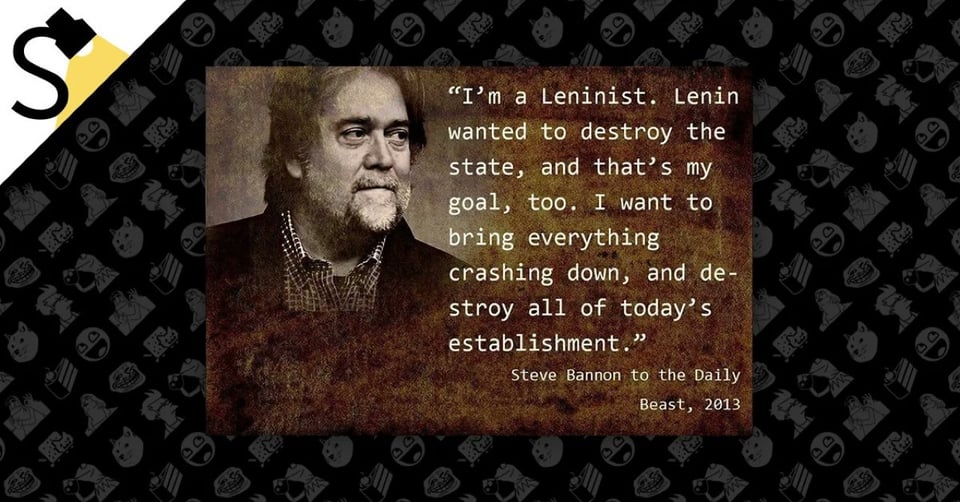
_________________________________________________
The Trump jury returns today.
Will a verdict happen today?
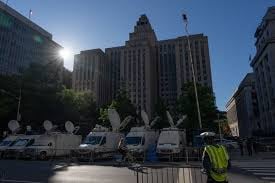
Jury Begins Sifting Evidence as It Weighs Trump’s Fate in Criminal Case.
Justice Juan M. Merchan explained the 34 charges of falsifying business records that Donald J. Trump faces before jurors went behind closed doors to start their deliberations.
It’s all up to the jury now.
After seven weeks of legal wrangling and tawdry testimony, the first criminal trial of an American president moved to a jury of Donald J. Trump’s peers on Wednesday morning, the final stage of the landmark trial.
Mr. Trump’s fate is in the hands of those 12 New Yorkers, who will weigh whether to brand him as a felon. It could take them hours, days or even weeks to reach a verdict, a decision that could reshape the nation’s legal and political landscapes. And while the country anxiously awaits their judgment, Mr. Trump will continue to campaign for the presidency.
The moment that deliberations began marked a transfer of power from the experts in the courtroom — the lawyers arguing the case and the judge presiding over it — to the everyday New Yorkers who forfeited weeks of their lives to assess a mountain of evidence about sex and scandal.
The jurors, who spent more than four hours deliberating on Wednesday without reaching a verdict, meet around a long table in an unremarkable room with unforgiving lighting and walls painted a hue best described as municipal. Located off a small hallway behind the courtroom, it is steps from the jury box and has a door at each end, outside of which a court officer stands guard.
The judge, Juan M. Merchan, had invited the jurors to send him a note if they were confused about the law, or wanted to revisit testimony from the trial. And they took him up on the offer, buzzing the court officer to relay a message requesting four excerpts from the testimony.
On Thursday, a court reporter will read that testimony to the jury, most of which comes from David Pecker, the former publisher of The National Enquirer, who prosecutors say was part of a conspiracy to suppress unflattering stories on Mr. Trump’s behalf during the 2016 election. Another portion of testimony relates to Michael D. Cohen, Mr. Trump’s former fixer who was the prosecution’s star witness.
Before the jurors began deliberating Wednesday, Justice Merchan delivered an array of legal instructions to guide their decision-making. He impressed on them the gravity of their task but also said that the defendant — even a former president — is their peer.
“As a juror, you are asked to make a very important decision about another member of the community,” Justice Merchan said, referring to the defendant.
The case exposed what prosecutors from the Manhattan district attorney’s office described as a fraud on the American people. It is one of four criminal cases against Mr. Trump, but most likely the only one that will go to trial before Election Day.
The Manhattan charges stem from a hush-money deal that Mr. Trump’s fixer, Michael D. Cohen, struck with a porn star in the final days of the 2016 presidential campaign. Prosecutors charged Mr. Trump with 34 counts of falsifying business records, saying he disguised his reimbursement of Mr. Cohen as ordinary legal expenses.
The jurors, seven men and five women, hail from different neighborhoods of the nation’s largest city and hold a wide variety of jobs, representing a cross-section of Manhattan. Many have advanced degrees, and the panel may be aided by the two members who are lawyers, though neither appears to have criminal experience, and one said during jury selection that he knew “virtually nothing about criminal law.”
On Wednesday morning, Justice Merchan laid out the legal instructions to guide their discussions. He described to them the legal meaning of the word “intent” and the concept of the presumption of innocence. He also reminded the jurors that they had pledged to set aside any biases against the former president before they were sworn in, and that Mr. Trump’s decision not to testify cannot be held against him.
Then, Justice Merchan explained each of the 34 charges of falsifying business records that Mr. Trump faces, one for each document the prosecution says that Mr. Trump falsified. It was the most important guidance that the judge offered during the trial. And it was no simple task.
In New York, falsifying records is a misdemeanor, unless the documents were faked to hide another crime. The other crime, prosecutors say, was Mr. Trump’s violation of state election law that prohibited conspiring to aid a political campaign using “unlawful means” — a crime they say he committed during his 2016 campaign for president.
Those means, prosecutors argue, could include any of a menu of other crimes. And so each individual false-records charge that Mr. Trump faces contains within it multiple possible crimes that jurors must strive to understand.
Justice Merchan explained which document each count pertained to, referring to each of the 34 records — 11 invoices from Mr. Cohen, 12 entries in the Trump Organization’s general ledger and 11 checks, nine of them signed by Mr. Trump.
Marc F. Scholl, who served nearly 40 years in the district attorney’s office, noted that jury instructions are often difficult to follow, particularly given that, in New York, jurors are barred from keeping a copy of the guidance as they deliberate. And he said that defendants are often charged with several different crimes, requiring even more elaborate instructions.
Still, Mr. Scholl said, one point of complexity stood out in the Trump case: “Usually you don’t have this layering of these other crimes.”
Justice Merchan encouraged jurors, if they find themselves confused by legal arcana, to send him a note seeking clarification, and in addition to their request for testimony, they asked the judge to repeat his instructions. “He recognizes it’s a lot to take in,” Mr. Scholl said.
If convicted, Mr. Trump would face a sentence ranging from probation to four years in prison — although he would be certain to appeal, a process that could take years.
Compared with the instructions, the trial testimony was relatively straightforward. Prosecutors called 20 witnesses as they sought to convince jurors that Mr. Trump had hatched the election conspiracy with his former personal lawyer and fixer, Mr. Cohen, and the publisher of a supermarket tabloid, The National Enquirer, David Pecker.
The first witness, Mr. Pecker, testified that in a 2015 meeting at Trump Tower, he had agreed to suppress unflattering stories on behalf of Mr. Trump’s candidacy. He did so twice, he said. He paid a former Trump Organization doorman and a former Playboy model to keep silent after learning that both of them had damaging stories to sell about the candidate.
But Mr. Pecker did not pay for the third — and potentially the most damaging — story that came to his attention. That story belonged to Stormy Daniels, a porn star who said that she had a sexual encounter with Mr. Trump 10 years earlier, a story that she repeated from the witness stand and that Mr. Trump has always denied.
The final prosecution witness, Mr. Cohen, testified that Mr. Trump had ordered him to pay Ms. Daniels to keep silent. Mr. Cohen obeyed, sending $130,000 to Ms. Daniels in the days before the election.
After he won, Mr. Cohen said, Mr. Trump approved the plan to falsify the reimbursement records.
Defense lawyers repeatedly sought to paint Mr. Cohen as an inveterate liar out for revenge against the boss who spurned him.
On Wednesday, Justice Merchan told the jury that the law considers Mr. Cohen an accomplice “because there is evidence that he participated in a crime, based upon conduct involved in the allegations here against the defendant.”
But he also told the jurors that “even if you find the testimony of Michael Cohen to be believable, you may not convict the defendant solely upon that testimony, unless you also find that it was corroborated by other evidence.”
Justice Merchan then proceeded through each of the 34 charges count by count to explain what prosecutors had needed to prove. The knotty legal instructions were the product of intense argument between the prosecution and the defense, culminating in a hearing last week in which each side sought to persuade the judge to make minor edits that they hoped would have a major impact.
The result was a compromise, with both sides securing some victories.
In one important decision, the judge rejected a defense request that jurors be unanimous on which “unlawful means” Mr. Trump had used to aid his election win. That request would have made reaching a verdict far more difficult.
Prosecutors argued that would be special treatment and that the former president should be treated like any other defendant. Mr. Trump’s lawyers argued that while the law did not require such unanimity, Justice Merchan could nonetheless ask for it.
“What you’re asking me to do is change the law, and I’m not going to do that,” Justice Merchan told Mr. Trump’s lawyers.(New York Times).
The 55 page instructions to the jury by Judge Merchan. 👇
https://static01.nyt.com/newsgraphics/documenttools/d458fdbff3cd7a41/84784522-full.pdf
_________________________________________________
Tricky rules threatened Biden appearing on the Ohio Presidential ballot.
Don’t worry. The Fix is in.
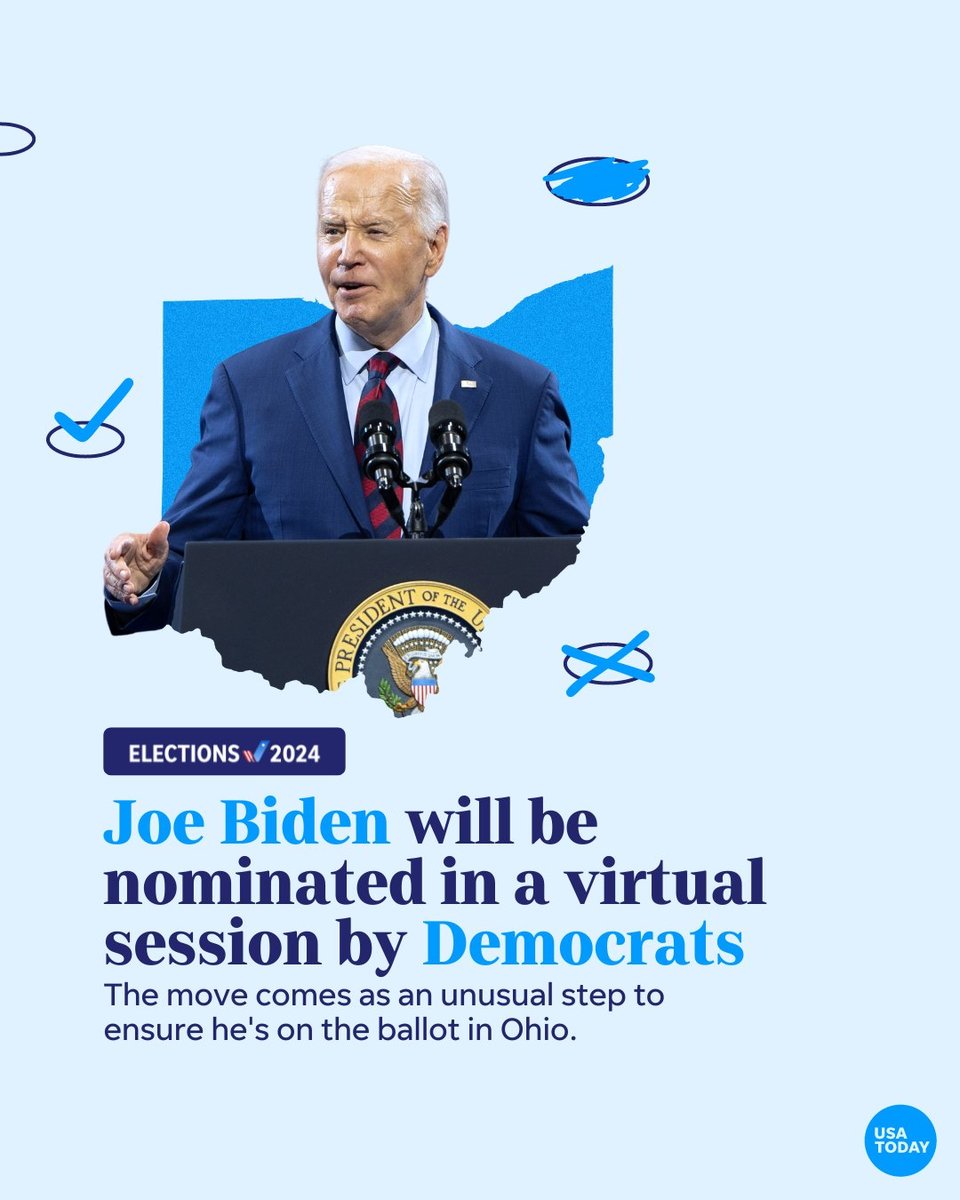
On Tuesday, the Democratic National Committee (DNC) announced that to ensure that Joe Biden appears on the Ohio ballot this November, they must technically nominate the President through a “virtual roll call” vote ahead of the August 19-22 Democratic National Convention.
The fix is the DNC's answer to a standoff with the Republican-controlled Ohio General Assembly which refused to pass legislation to alter an obscure legal deadline for ballot access.
Both Democratic and GOP lawmakers appeared unaware that Ohio requires political parties to confirm their presidential candidates 90 days before the November election, which would be August 7. As that comes two weeks before Biden is officially nominated at the Democratic Convention in Chicago, he could not be placed on the ballot as the Democratic nominee.
The DNC Rules and Bylaws Committee will meet virtually Tuesday, June 4 at 6:00pm ET to vote on a resolution to clear the way for the virtual nomination event. If approved, the resolution will then need a vote from the full DNC. (Dem List).
_________________________________________________
Alito makes clear why the Supreme Court needs a code of ethics.
No word from Chief Justice Roberts.
Alito rejects Jan. 6 recusal request over flag controversy.
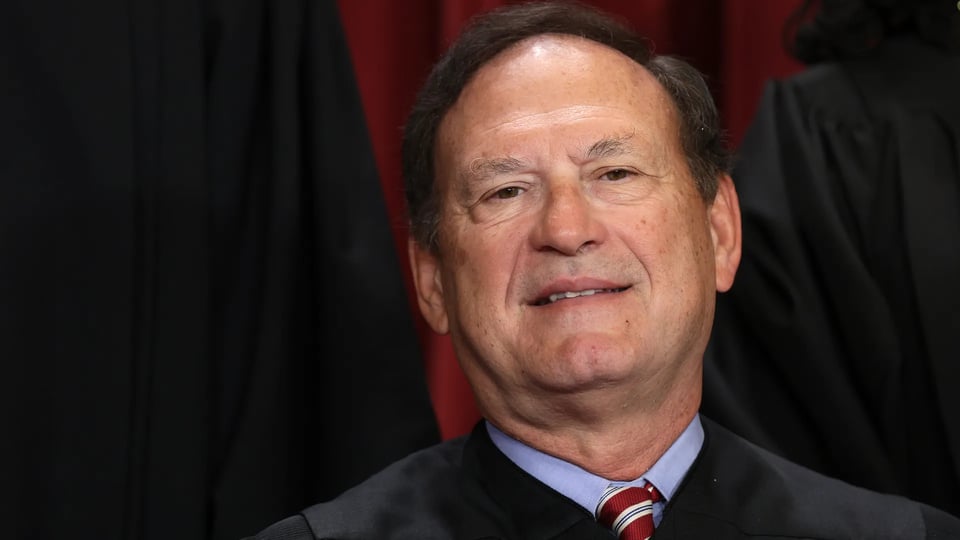
Supreme Court Justice Samuel Alito on Wednesday denied a request from Democratic lawmakers for him to recuse himself from cases involving former President Trump and Jan. 6 defendants because of a controversy over flags flown at his homes.
Why it matters: The Supreme Court justice has been under scrutiny since two flags with connections to Jan. 6 were flown at his properties.
The events heightened worries among Democrats that Alito participating in the cases would be a conflict of interest.
Context: An upside-down American flag, a symbol of the "Stop the Steal" movement, was hung outside the Alito home days after the Jan. 6 attack, the New York Times reported earlier this month.
The Times later reported that a second "Appeal to Heaven" flag associated with the "Stop the Steal" movement was flown at Alito's vacation home as recently as 2023.
In both instances, Alito said his wife hung the flags.
In response to the reports, Democratic lawmakers led by Senate Judiciary Chair Dick Durbin (D-Ill.) and Sen. Sheldon Whitehouse (D-R.I.) called on Alito to recuse himself from upcoming Jan. 6-related cases before the court.
Among those cases is an appeal brought by a man charged with obstructing an official proceeding by participating in the Jan. 6 Capitol attack.
How the court decides that case won't only affect cases against hundreds of other Jan. 6 defendants, but it will affect the Department of Justice's 2020 election interference case against Trump, as he was also charged with obstructing an official proceeding.
The court is also hearing Trump's claim of "absolutely immunity" from prosecution, which stemmed from the DOJ's election case.
What they're saying: Responding to their calls on Wednesday, Alito said he will not recuse himself over the flag controversies because they were his wife's doing.
He said his wife hung the upside-down American flag in response to a dispute with a neighbor and was also unaware that the "Appeal to Heaven" was associated with an effort to overthrow 2020 election results.
"A reasonable person who is not motivated by political or ideological considerations or a desire to affect the outcome of Supreme Court cases would conclude that this event does not meet the applicable standard for recusal," Alito wrote. "I am therefore duty-bound to reject your recusal request."
Between the lines: There are chronological errors with Alito's claims regarding the upside-down American flag, as the argument he references took place a month after the flag was hung, according to the Times. (Axios).
_________________________________________________
All time best players change, as Major League Baseball statistics unite with the Negro League.
MLB integrates Negro League statistics into all-time record book with Josh Gibson now career batting average leader.
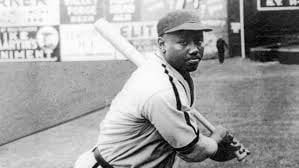
New MLB all time batting leader, Josh Gibson.
CNN —
Major League Baseball has incorporated the statistics of former Negro Leagues players into its historical records on its website, meaning legendary leaders in some categories like Babe Ruth and Ty Cobb have now been replaced in the record books by players who were not allowed to play on the same fields as them during segregation.
Josh Gibson, one of the greatest sluggers in the history of the Negro Leagues, is now listed as MLB’s new all-time career leader in batting average at .372, moving ahead of Ty Cobb at .367.
The MLB website shows Gibson also overtaking Babe Ruth in career slugging percentage.
“We are proud that the official historical record now includes the players of the Negro Leagues. This initiative is focused on ensuring that future generations of fans have access to the statistics and milestones of all those who made the Negro Leagues possible,” said MLB commissioner Rob Manfred in a statement.
“Their accomplishments on the field will be a gateway to broader learning about this triumph in American history and the path that led to Jackie Robinson’s 1947 Dodger debut.”
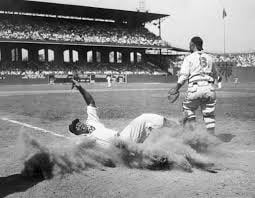
Josh Gibson slides home safely during the 1944 Negro Leagues East-West All-Star Game at Comiskey Park in Chicago.
Gibson was inducted into the National Baseball Hall of Fame in 1972.
“We’re excited,” Sean Gibson, the slugger’s great grandson, told CNN. “This is a long time coming. Not just for Josh Gibson, but all the other great Negro League family members as well.”
The power-hitting catcher’s Baseball Hall of Fame plaque – he’s one of 35 Negro League stars enshrined in Cooperstown – says he “hit almost 800 home runs in league and independent baseball” during his 17-year career.
However, the majority of those homers came not in league-sanctioned games (about 50 to 75 per season) but in exhibitions played against former big leaguers and White semi-pro teams.
“This is indeed an exciting day. It was a long time coming,” Negro Leagues Baseball Museum President Bob Kendrick said at a Wednesday news conference. “It is an absolute watershed moment for both Black baseball and Negro League history.” (CNN).
_________________________________________________